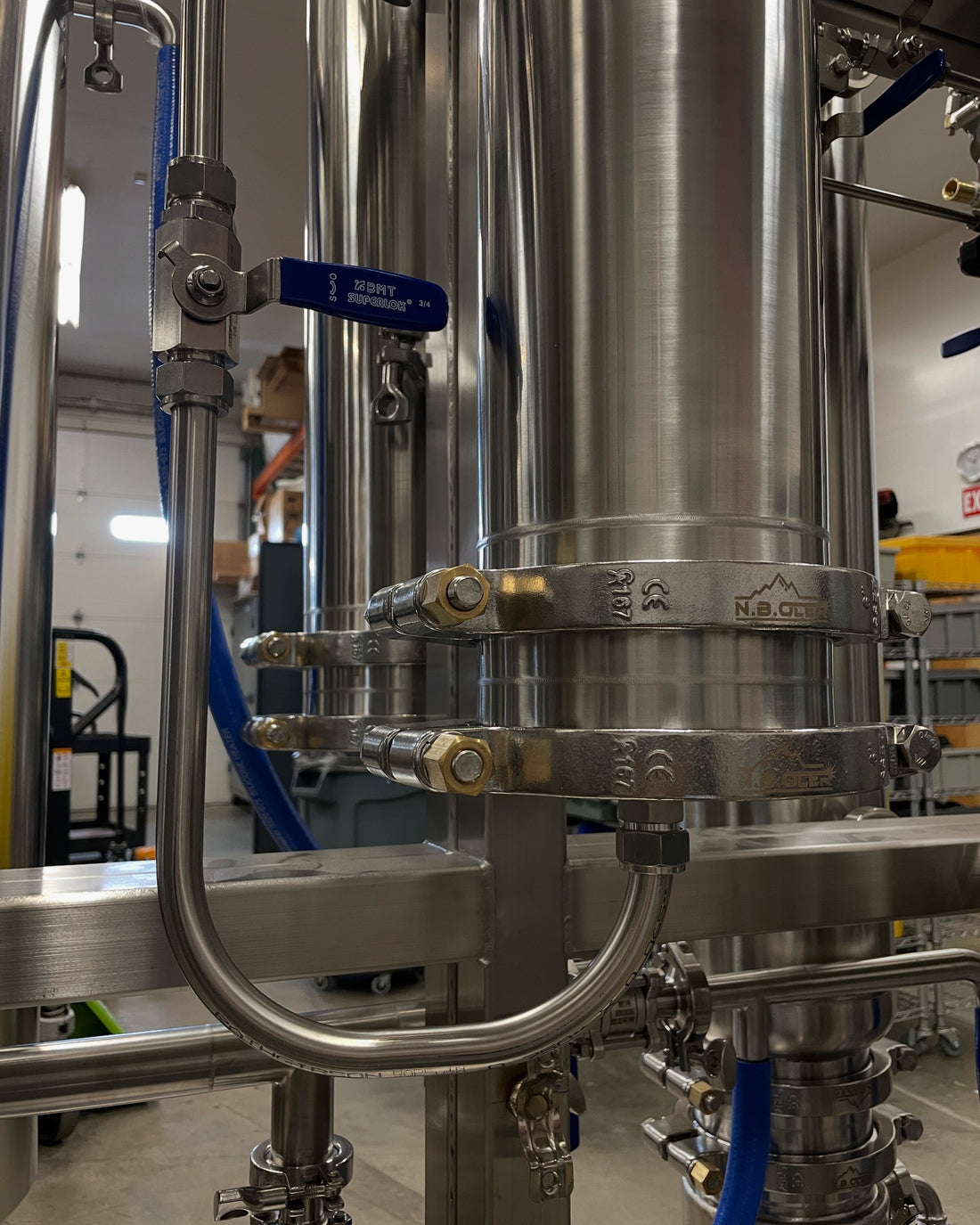
A Real-World Look at Butane Vapor Dynamics
Share
How Much Vapor Can Flow Through 3/4" Tubing? A Real-World Look at Butane Vapor Dynamics
In hydrocarbon extraction systems, especially those using n-butane, understanding flow dynamics is essential. We’re not talking about theoretical maxes in lab conditions—we mean actual flow through 3/4" stainless tubing, 10-micron sintered filters, and 6" packed beds full of molecular sieve media.
At N.B. Oler, we don’t just build ASME-certified stainless pressure vessels—we use them. Here’s a clear, field-tested breakdown of what limits your butane vapor flow and why it probably isn’t the tubing.
🔍 Common Setup
-
Gas: n-butane vapor
-
Tubing: 3/4" stainless steel (0.75" ID)
-
Filter: 10-micron, 5-layer sintered stainless mesh (6" dia)
-
Dryer: 6" column packed with 4A 4x8 molecular sieve beads
-
Outlet: 3/8" tubing (for condensed liquid)
-
Operating Pressure Range: 10–50 psi
-
Operating Temperature Range: –40°F to 125°F
💨 1. 3/4" Tubing Flow Capacity
Even though it's the smallest diameter in the system, 3/4" tubing can flow a lot of vapor. At 50 psi inlet and atmospheric outlet, it hits choked flow, meaning the gas is moving at Mach 1 at the exit.
✨ Choked Flow Max (50 psi, 100°F): ~51 lb/min of butane vapor
At 10 psi differential, you’re still getting around 20–22 lb/min depending on temperature.
Key Insight: Unless your run is long or has lots of fittings, your 3/4" tubing is probably not the bottleneck.
🧱 2. 10-Micron Sintered Filter (6" Diameter)
These 5-layer mesh filters are built to flow. With a 6" diameter and 10–20% porosity, they handle a lot of vapor with almost no pressure drop.
✅ Estimated Drop: <1 psi at 30+ lb/min if clean
BUT if the filter is fouled with media dust or moisture, it can quickly become restrictive. Clean regularly or use blowback to prevent pressure build-up.
⚡ 3. Molecular Sieve Packed Bed (6" Column)
This is where it gets tight. A 24" tall bed of 4x8 beads has a high surface area—great for scrubbing moisture, not great for high vapor flow.
We used the Ergun equation to model flow. Here’s what you get:
| ∆P Across Bed | Approx. Max Vapor Flow |
|---|---|
| 10 psi | ~24 lb/min |
| 50 psi | ~54 lb/min |
⚠ This is usually your bottleneck. If flow stalls, it’s probably your dryer column.
Design Tip: Shorten the bed, increase the diameter, or run beds in parallel to reduce pressure drop.
🌡️ Temperature Matters
-
Cold vapor (–40°F): denser, lower viscosity → higher mass flow potential
-
Hot vapor (125°F): less dense, more viscous → higher velocity, more friction
Always balance system temperature to stay in the single-phase vapor region and avoid unintended condensation.
✅ Summary: What Flows Where?
| Component | Flow @ 10 psi | Flow @ 50 psi |
| 3/4" Tubing | ~22 lb/min | ~51 lb/min (choked) |
| Sintered Filter | ≥ 50 lb/min | ≥ 100 lb/min (negligible drop) |
| Molecular Sieve Bed | ~24 lb/min | ~54 lb/min |
⚙️ Build Better with N.B. Oler
Every psi counts in passive systems. We design and fabricate stainless extraction components that eliminate flow bottlenecks. Want to:
-
Increase vapor speed?
-
Reduce recovery time?
-
Eliminate fouled filters and slow sieve beds?
Let’s talk. We offer ASME-certified vessels, custom dryer designs, and the field experience to size your system right.
☎️ Call us at 541-330-6409 or Contact Us Here
N.B. Oler — Real welders. Real vessels. Real performance.
